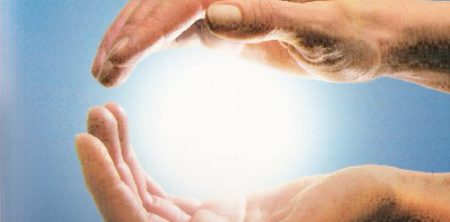SUBTLE ENERGIES AND ENERGY MEDICINE
George Goodheart introduced Applied Kinesiology in the mid-1960s. The fundamental lasting contribution of Applied Kinesiology is that the body can be scientifically understood, clinically assessed, and effectively treated as an energy system. Because this energy system is comprised of energy pathways that run through the organs and muscles, it is possible to assess a person's health in terms of the functional or dysfunctional flow of energy to specific organs via an approach called "muscle testing" (thus the use of the term "kinesiology"). A dysfunctional flow of energy through the pathway that goes to the liver, for instance, can be detected and is believed to correspond with vulnerability or disease in the liver. Restoring a healthy flow of energy through that pathway is believed to prevent illness or restore health in the liver.
This approach had parallels with many traditional healing systems, from acupuncture to yoga to medical qi gong. But it also introduced a distinctly Western procedure for determining the energetic health of the body and specific organs, as well as an evolving set of procedures for restoring and maintaining that health. Dr. John Thie drew upon the principles of Applied Kinesiology to develop a self-administered, grassroots approach to health care, known as Touch for Health, which has been taught to countless numbers of people in more than 50 countries (Thie's book is in 34 languages). Meanwhile, dozens of other approaches to working with the body's energies, from Reiki to Healing Touch, were also being developed or introduced to the West. In 1989, the International Society for the Study of Subtle Energies and Energy Medicine (ISSSEEM) was formed to scientifically study these approaches and the principles they represent, introducing the peer-reviewed journal, Subtle Energies and Energy Medicine, in 1990.
This approach had parallels with many traditional healing systems, from acupuncture to yoga to medical qi gong. But it also introduced a distinctly Western procedure for determining the energetic health of the body and specific organs, as well as an evolving set of procedures for restoring and maintaining that health. Dr. John Thie drew upon the principles of Applied Kinesiology to develop a self-administered, grassroots approach to health care, known as Touch for Health, which has been taught to countless numbers of people in more than 50 countries (Thie's book is in 34 languages). Meanwhile, dozens of other approaches to working with the body's energies, from Reiki to Healing Touch, were also being developed or introduced to the West. In 1989, the International Society for the Study of Subtle Energies and Energy Medicine (ISSSEEM) was formed to scientifically study these approaches and the principles they represent, introducing the peer-reviewed journal, Subtle Energies and Energy Medicine, in 1990.
In 1998, Donna Eden, a gifted healer with the clairvoyant-like ability to literally see the body's energies, published Energy Medicine (written with her husband, psychologist David Feinstein), a book that helped define the hands-on practice of energy medicine approaches and that was a U.S. Book News Book of the Year (self-help category). Growing out of the principles articulated in that book, Eden's professional certification program set a standard for the practice of energy medicine. Two years after the publication of Eden's Energy Medicine, James Oschman's Energy Medicine: The Scientific Basis, established an empirical foundation for the field. Eden and Feinstein's 2008 journal article, Six Pillars of Energy Medicine, provided professionals a succinct overview of the approach and its strengths in relationship to conventional medicine.
Meanwhile, an offshoot of these developments was the application of the principles of energy medicine to working with emotional problems or issues. Roger Callahan, Ph.D., a psychologist who had studied Goodheart's work, found that tapping on acupuncture points along with a series of other physical and psychological procedures could rapidly alleviate a range of emotional problems. Called Thought Field Therapy (TFT), Callahan's approach gained wide attention beginning in the 1980s, but claims such as his "Five-Minute Phobia Cure" also generated substantial controversy among conventional psychotherapists. Still, the approach spread widely, with more than 30 variations appearing in the 1990s, described using the umbrella term "energy psychology" by psychologist Fred Gallo in his 1998 groundbreaking book, Energy Psychology. A professional organization, the Association for Comprehensive Energy Psychology, was formed in 1999. Among the most well-known of the energy psychology approaches are Gary Craig's Emotional Freedom Techniques (EFT), the Tapas Acupuncture Technique (TAT), and Robert Williams' PSYCH-K. As of January 2009, EFT's twice-weekly e-letter had 430,000 active subscribers.
Because of the many variations and the lack of a firm theoretical basis, David Feinstein headed a group of 26 of the pioneers and leaders within energy psychology to answer the question: "What principles and methods can we all agree upon that a trained therapist new to energy psychology should master before introducing energy psychology into a professional practice?" The resulting award-winning 40-hour CD-ROM training program and companion book, Energy Psychology Interactive (2004), gave clearer definition to the field and continues to serve as a primary resource for professionals studying energy psychology. Feinstein, Donna Eden, and Gary Craig published The Promise of Energy Psychology in 2005, another book to win a national award and still considered by many to be the best popular introduction to the field.

